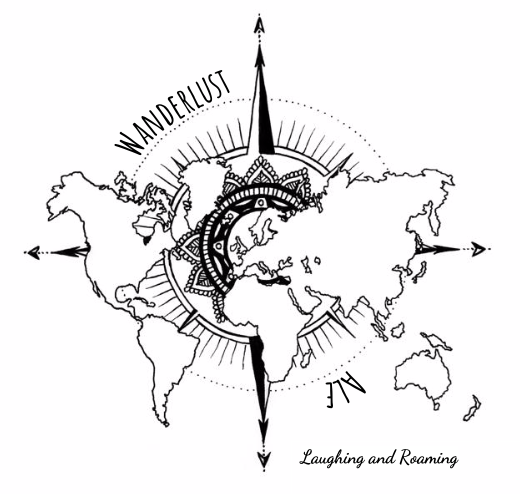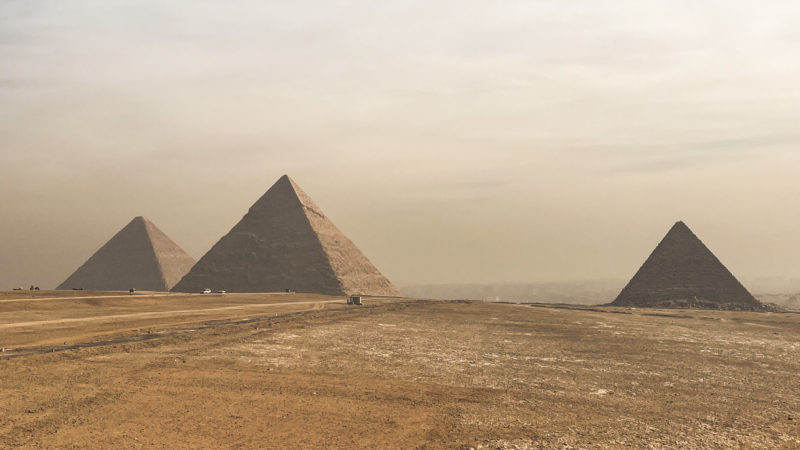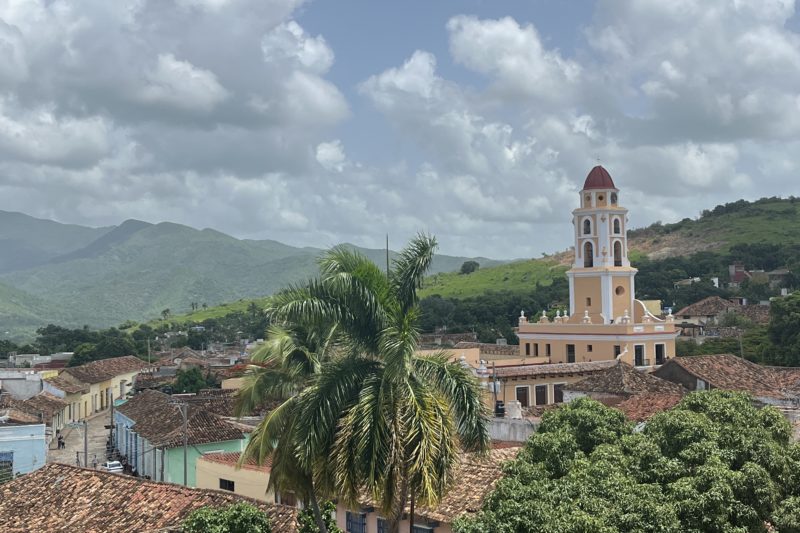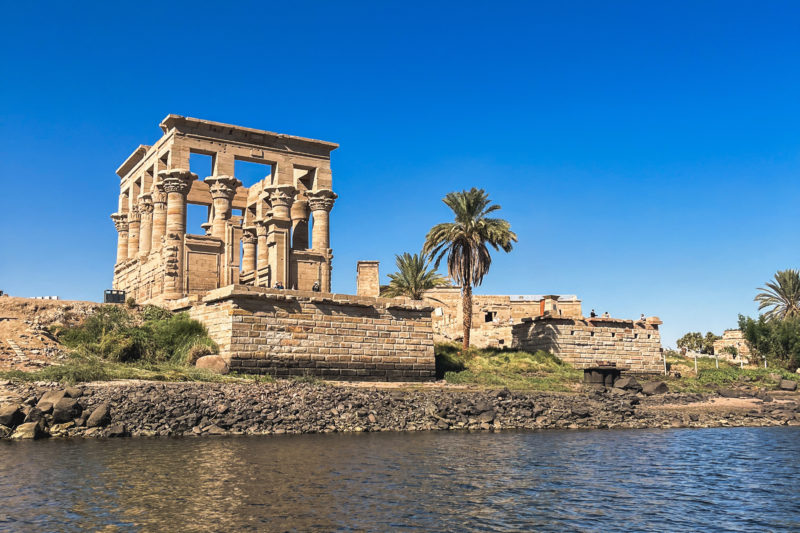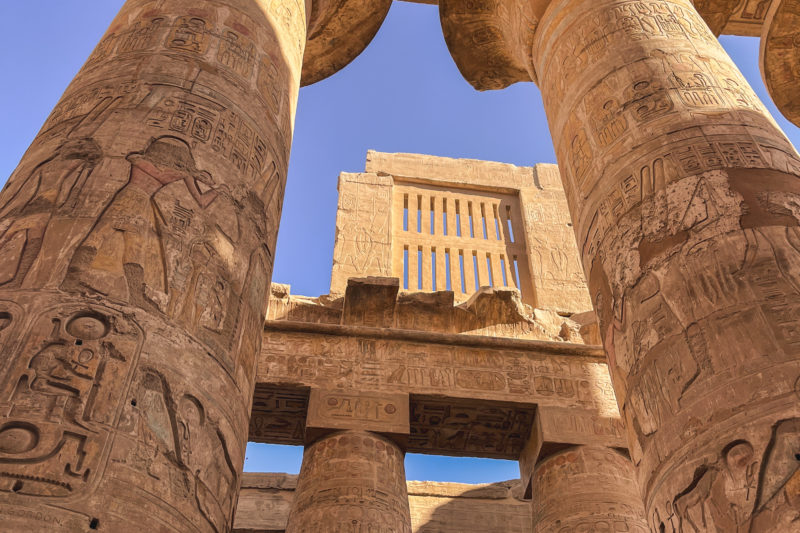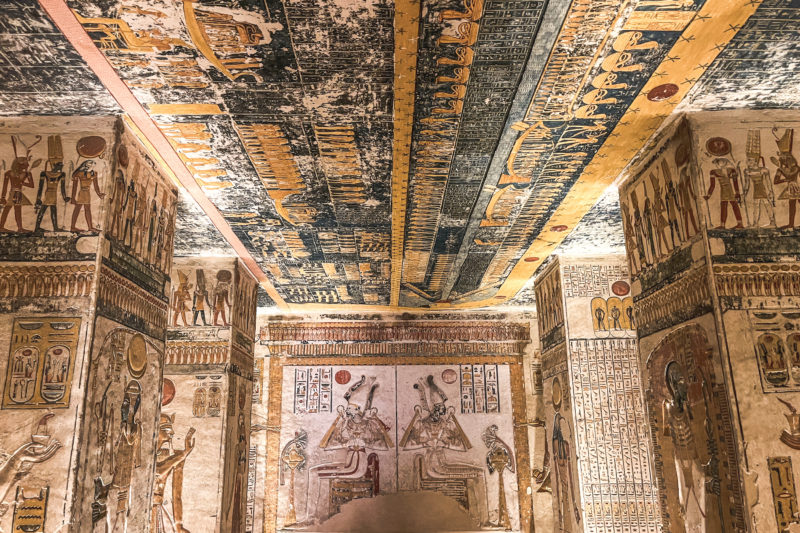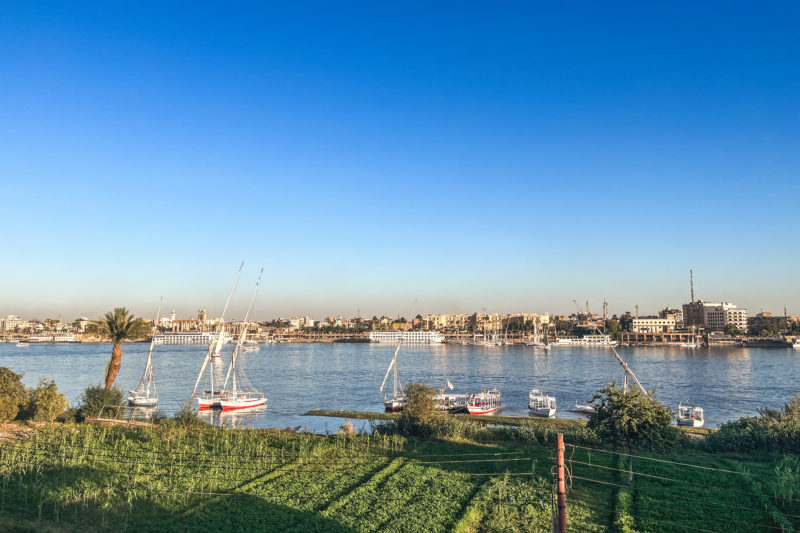Moved, shaken, fascinated… I stand with deep emotion at the base of the Great Pyramid of Khufu, the oldest of the Seven Wonders of the Ancient World. The warm desert wind brushes against my skin, but the silent majesty of this pyramid fills my thoughts. How were such architectural feats accomplished with the tools of their time?
This question lingers in my mind throughout my visit—a mystery I do not claim to solve definitively. But one thing is certain: the pyramids, with their colossal stone blocks and almost supernatural precision, command immediate respect and profound humility.
The Pyramids of Giza are also known as the Giza Pyramid Complex. They encompass the Egyptian pyramids located in the renowned necropolis on the Giza Plateau, near the bustling city of Cairo (approximately 20 km away). This site has been a UNESCO World Heritage Site since 1979.

The necropolis you see above is part of the Memphite necropolises, stretching roughly 30 kilometres west of Ancient Egypt’s capital, from Dahshur in the south (which I visited the day before) to Abu Rawash in the north. Together, these necropolises encompass 38 pyramids and over 9,000 tombs. However, the Giza Plateau is world-famous for hosting the iconic pyramids of Khufu, Khafre, and Menkaure, all dating back to the Fourth Dynasty (approximately 2670–2450 BCE).
With every step around the Great Pyramid of Khufu, I feel small, swept into a whirlwind of centuries of history, secrets, and mysteries.




It’s hard to grasp how these monuments were built without modern technology fully. Numerous theories exist: hauling massive blocks using ramps, employing levers, or mobilizing hundreds of thousands of workers to complete the task. Regardless of the method, one thing is certain: these colossal structures have endured the ages, defying time and the elements with remarkable resilience. Simply gazing upon these edifices and feeling their almost tangible presence seems to suspend time.




Yet, when I step away from the pyramids and find myself face-to-face with the Sphinx, the enigma deepens. The Sphinx’s timeless and enigmatic gaze fixes on me unblinkingly. What secrets lie hidden behind this mythological visage, carved from stone millennia ago? Legend has it that the Sphinx guards the pyramids and protects treasures buried beneath its feet. Still, its gaze seems to pierce through space and time, as if inviting us to uncover what has been lost.

Around me, the bustling activity of tourists fades away, as though this sacred place belongs to another dimension. Strolling among these remnants of the past, I feel a unique energy, almost indescribable, emanating from this site steeped in history. Here, history is not confined to written accounts—it is something to be experienced, you breathe in deeply.




Visiting the Pyramids of Giza: Some Useful Information
During our stay, we had several options for visiting the pyramids, and I must say we were incredibly lucky: we stayed at a fabulous Airbnb with a breathtaking view of the pyramids! The host, Ashraf, is a fascinating character—not only does he have countless stories to share about his exciting life, but he also runs several tourist activities. Thanks to his extensive network, he organized our visits to Luxor and Aswan and introduced us to exceptional guides, including the one who accompanied us to the pyramids.
Let’s talk about the guides. If I can offer you one piece of advice, it’s to choose a certified Egyptologist guide. The guide Ashraf recommended spoke French and was fantastic! Thanks to him, we explored the history of the pyramids from a truly captivating perspective. These passionate experts have a deep understanding of Egypt’s history, archaeology, and culture, making the monuments and ancient stories come alive.
An Egyptologist guide will not only show you the iconic aspects of the sites but also reveal lesser-known details that often go unnoticed by untrained visitors. Their expertise transforms a simple visit into a true immersion into the past, explaining the historical context, hidden symbols, and fascinating tales of the pharaohs and civilizations that shaped humanity.


If you’re interested, I highly recommend staying at the Great Pyramids View – Sky Lounge and speaking with Ashraf to arrange your excursions.


As for costs, I can’t provide an exact breakdown of the prices, as everything was included in a package deal that cost approximately €50 per person. This included entrance to the site, a visit inside the Great Pyramid of Khufu (the only one open to tourists), and the guide’s services. Honestly, it was worth every cent!


The pyramids radiate a unique aura, and it’s easy to get swept up in their mystery. But it’s important to know that in the 19th century when Egyptology was still in its infancy, many gaps in knowledge were filled with speculation and myths. Even today, despite significant advances in research, some of these myths remain deeply ingrained, including in popular culture (guilty as charged—I couldn’t resist imagining myself as a modern-day archaeologist!).
The so-called “mysteries” often discussed are, in fact, questions without unanimous answers. Among the most famous are: the potential existence of hidden chambers in the Great Pyramid of Khufu (and the treasures they might hold), the exact construction techniques used (was there a single protocol or multiple methods?), the precise timeline of their construction, and their symbolic meaning to their builders.
These unanswered questions only add to the fascination the pyramids evoke. But one thing is certain: a well-guided visit helps you better understand these marvels while still allowing you to be swept away by their magic. Whether you’re there to explore historical facts or dream about legends, the Pyramids of Giza offer an unforgettable experience.

While visiting, consider adopting an ethical and respectful approach. Avoid supporting camel rides or attractions, as these animals often endure harsh conditions, including excessive loads and poor treatment.

Fortunately, you can fully enjoy your visit on foot. The paved paths make walking a pleasant experience, allowing you to explore the site at your own pace. By choosing this option, you’ll better appreciate the historical richness and beauty of the location while respecting local wildlife.
The pyramids stand as timeless witnesses, symbols of a civilization whose brilliance continues to illuminate our present. Despite the enigmas that surround them, one certainty remains: these masterpieces of human ingenuity will forever stand in the desert, defying the passage of time with their undiminished magnificence.
Your visit to Giza will leave an indelible mark on your soul, as it did on mine.

